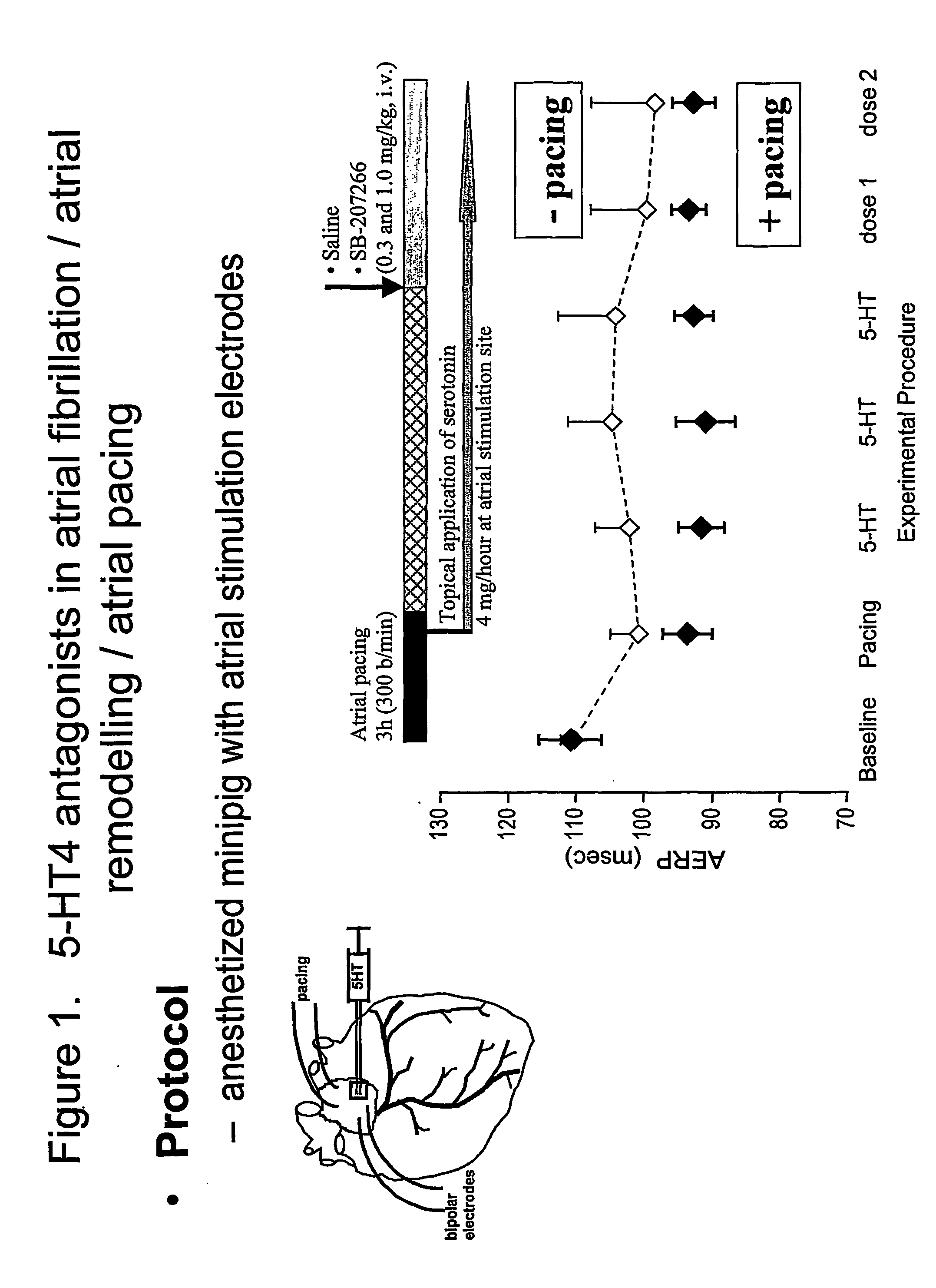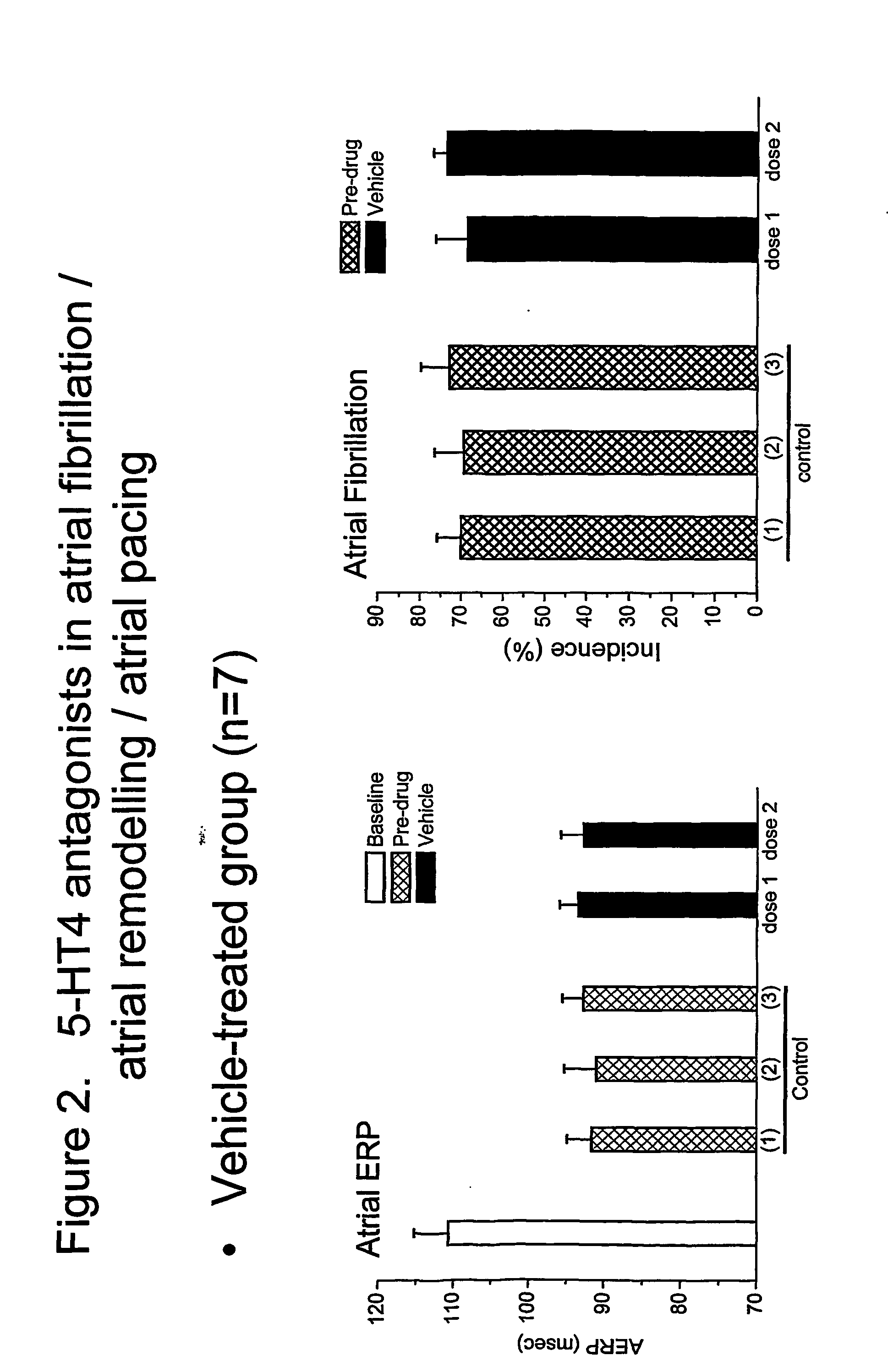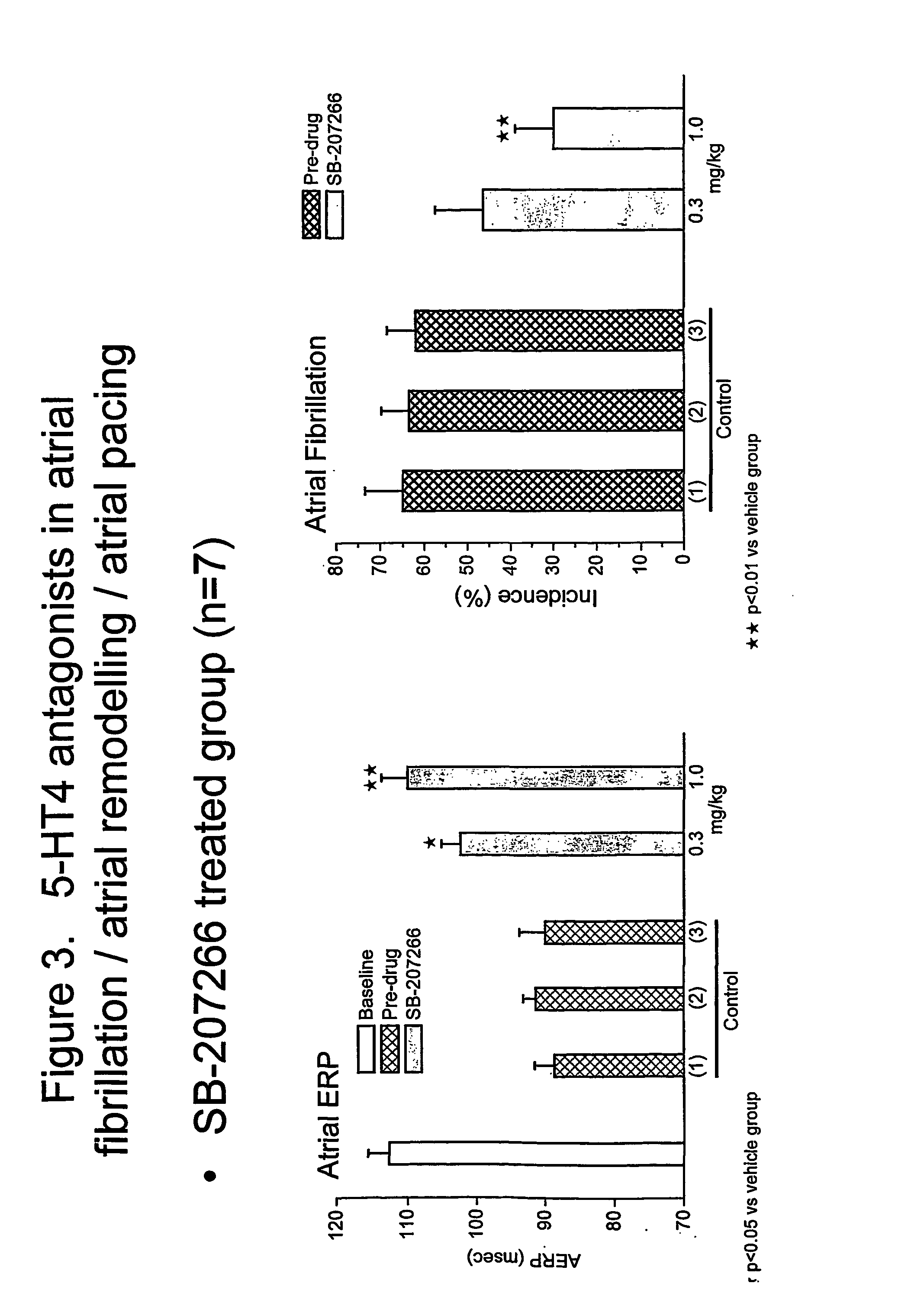The use of 5ht4 receptor antagonists in the prophylaxis or treatment of certain cardiovascular conditions
a technology of 5ht4 receptor and antagonist, which is applied in the direction of biocide, cardiovascular disorder, drug composition, etc., can solve the problems of insufficient 60 sec pacing protocol in rahme, increase mortality risk, and insufficient atrial remodelling
- Summary
- Abstract
- Description
- Claims
- Application Information
AI Technical Summary
Benefits of technology
Problems solved by technology
Method used
Image
Examples
example 1
Experimental Atrial Fibrillation / Atrial Remodelling Test Results with SB-207266
The antiarrhythmic efficacy of SB-207266 (0.3 and 1.0 mg / kg, intravenous) was evaluated on the inducibility of AF in a model of 5-HT-induced atrial arrhythmia in anesthetized Yucatan minipigs. As shown in FIG. 1, prior to AF induction, animals were sensitized by 3 hours of rapid atrial pacing (200 msec cycle length) and concomitant topical application of 5-HT (4 mg / h) at the atrial stimulation site. The atrial effective refractory period (AERP) and AF inducibility were determined during programmed stimulation and burst electrical pacing.
In both vehicle- and drug-treated groups, rapid atrial pacing and application of 5-HT caused a reduction of AERP from 111.6±2.6 to 90.9±2.1 msec, before application of the vehicle or drug—see black diamonds (♦) in FIG. 1 and left-hand bar graph in FIG. 2. A smaller reduction of AERP was seen when 5-HT was added without atrial pacing—see white diamonds (⋄) in FIG. 1. A...
example 2
Conclusions
SB-207266 was shown to reverse significantly the reduction of AERP caused by combined rapid atrial pacing and topical application of 5-HT and to reduce significantly the incidence of AF episodes. These results suggest that SB-207266 and 5HT4 receptor antagonists in general may be effective at reducing / treating atrial fibrillation, associated with a restoration (increase) of the atrial ERP characterizing a reversal of the atrial electrical remodelling observed in the presence of 5-HT and atrial pacing.
The results with SB-207266 described in Example 2 (and also in Example 1), appear to illustrate a novel approach for the treatment or prophylaxis of atrial remodelling and / or atrial arrhythmias such as atrial fibrillation, by administration / use of a 5-HT4 receptor antagonist such as any of the compounds described herein.
example 3
Protocol for the Treatment or Prophylaxis of Atrial Fibrillation and / or Atrial Remodelling in Humans Using Orally Administered SB 207266
A currently preferred protocol for the treatment or prophylaxis of atrial remodelling and / or atrial fibrillation using SB 207266 or a salt thereof is now described in detail.
This Protocol describes administration of SB 207266 or the salt (hereinafter “SB 207266”) to patients with symptomatic persistent atrial fibrillation (AF). The objective is the inhibition of symptomatic recurrences of atrial fibrillation in these patients with persistent AF. Patients with symptomatic persistent AF, of duration ≧48 hrs and <6 months, who require cardioversion (e.g. DC cardioversion) are suitable. Symptoms of persistent AF may for example include palpitations, etc. Patients preferably either have: therapeutic anticoagulation (e.g. warfarin) for ≧3 weeks before commencement of treatment, or in the absence of therapeutic anticoagulation for ≧3 weeks, the...
PUM
| Property | Measurement | Unit |
|---|---|---|
| total body weight | aaaaa | aaaaa |
| total body weight | aaaaa | aaaaa |
| total body weight | aaaaa | aaaaa |
Abstract
Description
Claims
Application Information
 Login to View More
Login to View More - R&D
- Intellectual Property
- Life Sciences
- Materials
- Tech Scout
- Unparalleled Data Quality
- Higher Quality Content
- 60% Fewer Hallucinations
Browse by: Latest US Patents, China's latest patents, Technical Efficacy Thesaurus, Application Domain, Technology Topic, Popular Technical Reports.
© 2025 PatSnap. All rights reserved.Legal|Privacy policy|Modern Slavery Act Transparency Statement|Sitemap|About US| Contact US: help@patsnap.com



